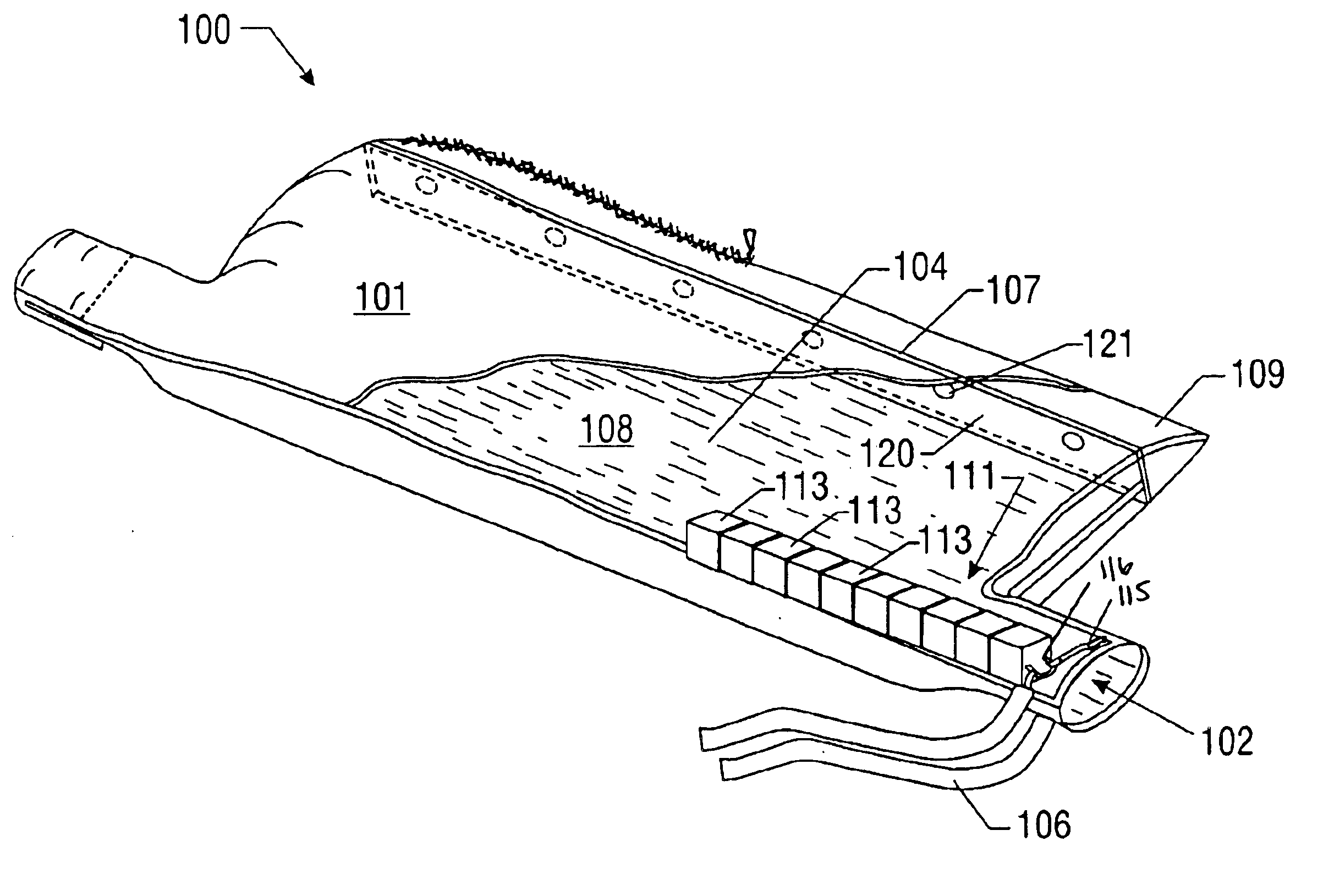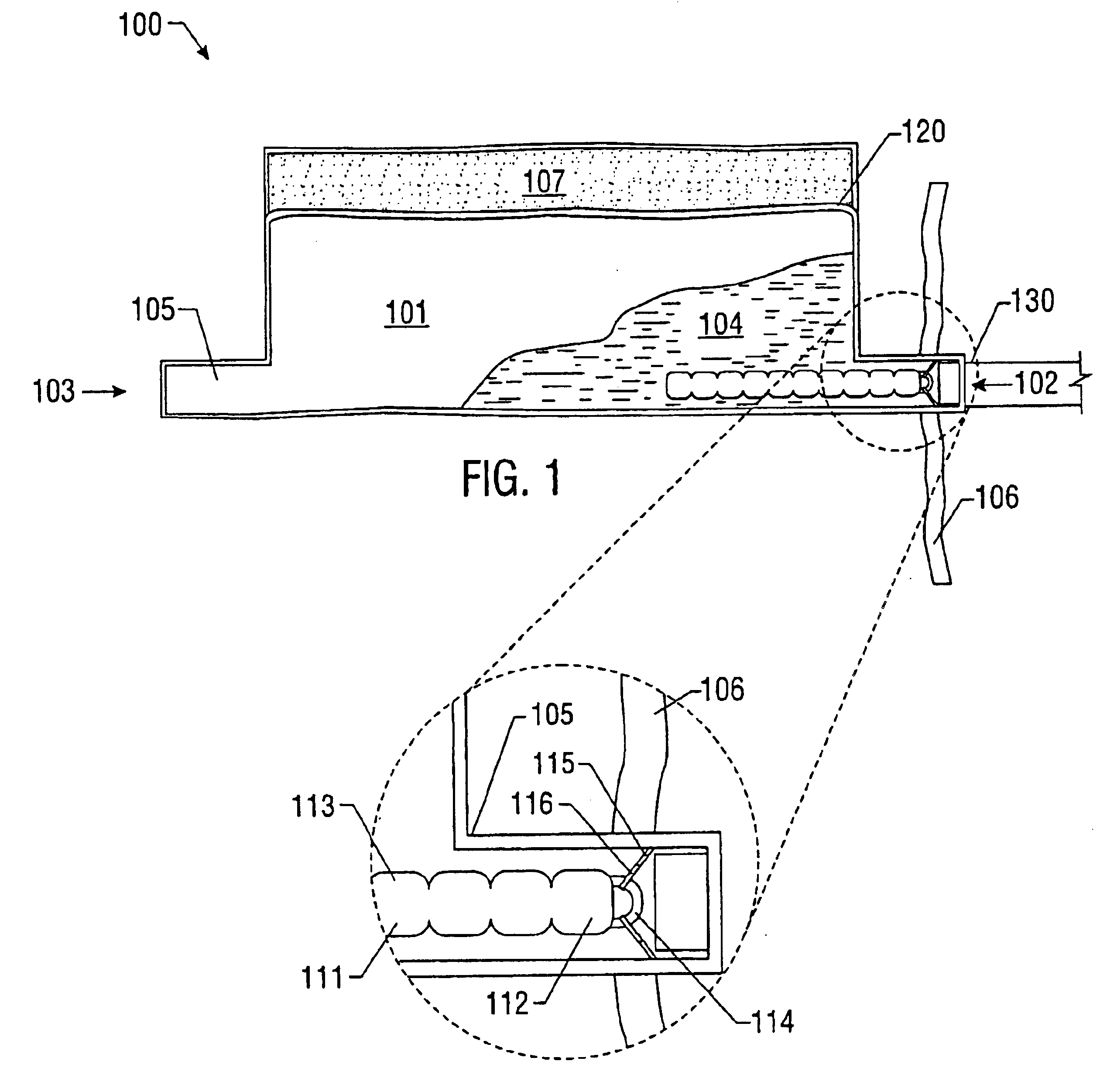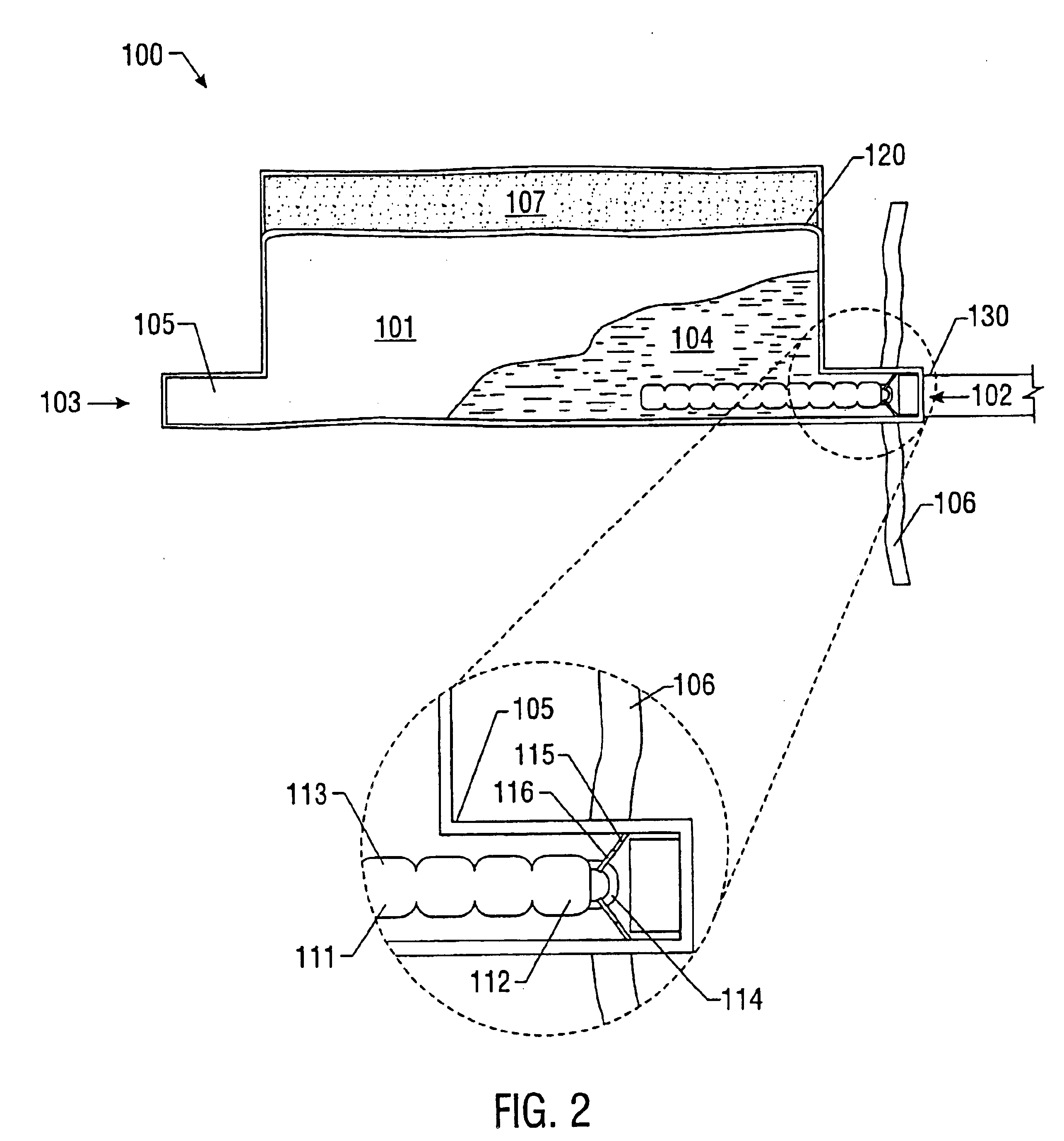Chitosan enhanced dewatering bag
a technology of enhanced dewatering bags and chitosan, applied in water cleaning, filtration separation, separation processes, etc., can solve the problems of cumbersome use of such large bags, increased cost, and increased load on any surface, and achieve the effect of being ready to renew
- Summary
- Abstract
- Description
- Claims
- Application Information
AI Technical Summary
Benefits of technology
Problems solved by technology
Method used
Image
Examples
Embodiment Construction
Recent water clarification technologies, such as those involving the use of chitosan, offer new opportunities to treat and clarify dirty or polluted water. The present invention provides improved devices and methods for treating and clarifying such water from numerous sources. One object of the present invention is to improve the ability of water treatment devices to remove unwanted pollution and solids from incoming water. Another object is to provide systems and devices that are more flexible in application and that may be reusable. These and other useful objects are achieved by the improved devices and methods disclosed herein. In the following detailed description, references are made to the accompanying drawings, which form a part of the description and in which are shown, by way of illustration, specific embodiments of the present invention. Although these embodiments are described in sufficient detail to enable one skilled in the art to practice the invention, it is understoo...
PUM
| Property | Measurement | Unit |
|---|---|---|
| diameter | aaaaa | aaaaa |
| permeable | aaaaa | aaaaa |
| permeability rate | aaaaa | aaaaa |
Abstract
Description
Claims
Application Information
 Login to View More
Login to View More - R&D
- Intellectual Property
- Life Sciences
- Materials
- Tech Scout
- Unparalleled Data Quality
- Higher Quality Content
- 60% Fewer Hallucinations
Browse by: Latest US Patents, China's latest patents, Technical Efficacy Thesaurus, Application Domain, Technology Topic, Popular Technical Reports.
© 2025 PatSnap. All rights reserved.Legal|Privacy policy|Modern Slavery Act Transparency Statement|Sitemap|About US| Contact US: help@patsnap.com



